Is your car throwing a fit with that dreaded check engine light? It’s like your vehicle is trying to tell you something, but you need a translator. That’s where the best OBD2 scanner 2024 comes in. Think of it as a communication bridge between you and your car’s computer, allowing you to understand what’s causing those mysterious warning signals.
An OBD2 scanner, or code reader, is an essential tool for any car owner, from DIY enthusiasts to professional mechanics. These devices plug into your car’s OBD2 port and can decipher trouble codes, clear check engine lights, and monitor your vehicle’s health in real-time. With the right scanner, you can save money on diagnostics and potentially fix minor issues yourself before they become major problems.
The market is flooded with OBD2 scanners, ranging from basic, budget-friendly models to advanced, feature-rich professional tools. How do you choose the best OBD2 scanner in 2024 for your specific needs? We’ve put in the wrench time, testing a range of scanners to bring you our top recommendations for the year.
Whether you’re looking for a simple code reader to keep in your glovebox or a sophisticated diagnostic tool with advanced features, our guide will help you navigate the options. We’ve considered factors like ease of use, vehicle compatibility, features, and value to help you make an informed decision.
Editor’s Note: Our guide to the best OBD2 scanners was updated on November 1, 2024, to include the Topdon TopScan OBD2 Bluetooth Scanner among our top recommendations.
Top OBD2 Scanners of 2024: Reviews & Recommendations
Best Overall OBD2 Scanner
OBDLINK MX+
OBDLINK MX+ OBD2 Scanner, a top pick for overall performance and features.
Key Features:
- Connection: Bluetooth (via mobile app)
- Data Logging: Trip statistics and comprehensive vehicle data for every drive
- Solution Identification: Yes
- Live Data: Yes, displayed on a customizable digital dashboard via app
- Display: Smartphone or tablet
- Vehicle Compatibility: All 1996 and newer vehicles compliant with OBD2 standards (U.S. and international)
Pros:
- Unlocks advanced data parameters for Ford and General Motors vehicles, including features like cooled seats and heated seats.
- Integrated battery drain and overvoltage protection for safe, continuous use.
- Broad compatibility with iOS, Android, Windows devices, and numerous third-party apps.
Cons:
- Limited compatibility with the newest vehicles, specifically 2022 models and newer, although updates are continuously rolled out.
Expert Review:
The OBDLINK MX+ ($140) stands out as a premium OBD2 scanner designed to extract the maximum amount of information from your vehicle’s OBD2 port. Its compact, plug-and-forget design allows for permanent installation in your OBD2 port, thanks to its intelligent battery drain and overvoltage protection. Furthermore, the MX+ boasts a robust security mechanism, claiming to be hacker-proof and safeguarding against unauthorized access.
In our testing, the MX+ consistently delivered the richest data sets. Diagnostic codes were displayed clearly and were easily cleared. The device excelled in generating detailed trip reports and logs, capturing hundreds of parameters, including granular fuel consumption data, exceeding the metrics provided by other scanners we evaluated. Notably, for many late-model vehicles from manufacturers like General Motors, Ford, Mazda, Nissan, and Toyota – including our diverse test fleet – the MX+ enabled us to access and clear codes from advanced automotive networks such as airbags, anti-lock braking systems, tire-pressure monitoring systems, and more.
A standout feature of the MX+ is its seamless integration with third-party applications. This scanner is compatible with a vast ecosystem of apps that unlock enhanced vehicle performance monitoring, allow customization of vehicle settings, enable remote engine start on supported vehicles, and even provide diagnostic capabilities for electric vehicles. Complementing its extensive data logging and graphical displays, the MX+ offers a heads-up display mode, presenting 13 customizable parameters in an easy-to-read gauge format on your smartphone or tablet screen, expanding the real-time data you can monitor while driving.
For performance enthusiasts, a dedicated performance mode tracks metrics like 0-60 mph acceleration, quarter-mile time, and half-mile time. While current compatibility is limited for vehicles manufactured in 2022 and later, OBDLINK is actively expanding vehicle support through frequent, free software updates.
In conclusion, while the OBDLINK MX+ represents a higher investment compared to other Bluetooth scanners, it delivers unparalleled vehicle insights. Its user-friendly interface is perfect for continuous monitoring, and its design excels in presenting live data effectively. For users seeking the most comprehensive data and features from their OBD2 scanner, the MX+ is undeniably the best OBD2 scanner 2024 in its class.
Best Budget OBD2 Scanner
Motopower MP69033
Motopower MP69033 OBD2 Scanner, the top budget-friendly option for basic code reading.
Key Features:
- Connection: Wired
- Data Logging: No
- Solution Identification: No
- Live Data: Limited
- Display: 2.8″ monochrome LCD screen
- Vehicle Compatibility: Broad compatibility with U.S., European, and Canadian models
Pros:
- Exceptionally affordable price point.
- Ergonomic design featuring large, user-friendly buttons.
Cons:
- Limited feature set compared to more advanced scanners.
- Primarily functions as a basic code reader.
- Screen clarity can be challenging in certain lighting conditions.
Expert Review:
For car owners seeking a dependable, no-frills OBD2 scanner without breaking the bank, the Motopower MP69033 ($24) is an excellent choice. This budget-friendly wired scanner reliably connects to your vehicle to read and clear diagnostic trouble codes. It features a straightforward design with large buttons for easy operation and a simple, intuitive menu.
This plug-and-play OBD2 scanner is compact and equipped with a 2.8-inch black and white LCD screen. Its 2.5-foot cable provides ample reach to comfortably use the scanner from the driver’s seat. Powered directly by your vehicle’s OBD2 port, it eliminates the need for batteries or charging.
Supporting six languages and compatible with most modern vehicles, the MP69033 offers broad vehicle coverage. What compromises are made at this price? While it provides access to some live data, the monochrome screen can be difficult to read, and it displays only a single parameter at a time. It lacks advanced features such as enhanced diagnostics and comprehensive data logging found in higher-end scanners.
However, sophisticated technology isn’t always necessary or desired. If you need a basic, analog-style scanner that reliably performs fundamental code reading and clearing, the Motopower MP69033 is a perfect, budget-conscious solution and a strong contender for the best OBD2 scanner 2024 for users prioritizing affordability.
Easiest-to-Use OBD2 Scanner
Bluedriver Pro
Bluedriver Pro OBD2 Scanner, recognized for its user-friendly interface and comprehensive app.
Key Features:
- Connection: Bluetooth
- Data Logging: Freeze frame data capture
- Solution Identification: Yes, provides multiple potential fixes
- Live Data: Yes
- Display: Smartphone or tablet
- Vehicle Compatibility: Extensive compatibility with U.S., European, and Canadian vehicles
Pros:
- Exceptionally user-friendly and intuitive mobile app interface.
- Generates comprehensive diagnostic reports with detailed code information.
- Supports diagnostics for advanced systems including airbag (SRS), tire-pressure monitoring system (TPMS), and anti-lock braking system (ABS).
Cons:
- Real-time live data monitoring can be less intuitive while driving and potentially confusing for novice users.
- Accessing the user manual requires cellular data or Wi-Fi connectivity.
- Limited compatibility with third-party applications.
Expert Review:
For those new to OBD2 scanners or who prefer a streamlined, user-centric experience, the Bluedriver Pro ($100) is an outstanding choice. This Bluetooth-enabled OBD2 scanner features a polished, user-friendly app interface. The device provides step-by-step guidance, simplifying the process of reading, understanding, and clearing check engine lights.
When reading codes with the Bluedriver app, a complete repair report is generated for each detected code. These reports include the vehicle identification number (VIN), the specific code and its frequency of occurrence, a list of potential solutions with direct links to relevant parts, and a feature to record your repair notes within the app. Reports can be conveniently shared, saved, and exported as PDF documents. Furthermore, the Bluedriver Pro extends its diagnostic capabilities to ABS, airbag, and TPMS codes, offering broader system coverage.
The app includes both helpful instructional prompts and a comprehensive user manual. However, the manual is presented as a series of YouTube videos, requiring cell service or Wi-Fi access for viewing. While live data is available, its presentation is less visually intuitive than the gauge-style display of the OBDLINK MX+, and the data refresh rate is slower. The Bluedriver Pro also does not support connectivity with third-party apps requiring a direct OBD2 interface.
Despite these minor limitations, the Bluedriver Pro excels in user-friendliness and Bluetooth app integration. Even users with minimal experience can effectively interpret and clear codes, identify potential solutions, and order necessary parts with ease. For its intuitive design and ease of use, the Bluedriver Pro is a top contender for the best OBD2 scanner 2024 for beginners.
Best Combo OBD1 and OBD2 Scanner
Bosch 1300 OBD
Bosch 1300 OBD Scanner, the premier choice for comprehensive OBD1 and OBD2 diagnostics.
Key Features:
- Connection: Wired
- Data Logging: Yes
- Solution Identification: Yes, leveraging a database of 26 million verified fixes
- Live Data: Yes
- Display: 3.5” color display
- Vehicle Compatibility: Full compatibility with U.S. OBD1 and OBD2 compliant vehicles
Pros:
- Unmatched OBD1 and OBD2 vehicle compatibility.
- Supports diagnostics for ABS and supplemental restraint system (SRS)/airbag codes.
- Battery-powered operation allows for use even when the vehicle battery is dead.
- Integrated database of 26 million experience-based fixes, accessible offline.
Cons:
- Highest price point among tested scanners.
- Included OBD1 cable set is bulky and less compact.
- Does not provide fuel mileage data.
Expert Review:
Bosch, a leader in automotive diagnostics for both professionals and DIYers, presents the Bosch 1300 OBD ($300) as a true powerhouse in vehicle communication. This scanner not only offers enhanced OBD2 capabilities but uniquely provides OBD1 compatibility, setting it apart from the competition.
The Bosch 1300 OBD features a wired design and includes six different adapter cables, ensuring compatibility with a broad spectrum of vehicles. This comprehensive set includes cables for 1984-1995 GM and Ford vehicles, 1989-1995 Chrysler and Toyota vehicles, and all OBD2-equipped vehicles.
The tool can be powered by a 9-volt battery or directly from the vehicle’s power supply. Notably, the battery power option allows for diagnostics even on vehicles with a dead battery. The 1300 series excels in detecting and reading ABS and airbag codes, in addition to standard OBD2 codes.
Beyond OBD1 compatibility, the Bosch 1300 OBD distinguishes itself with its integrated Code Connect database. This extensive offline database contains over 26 million verified fixes for check engine light codes, accessible without needing cell service or Wi-Fi.
While a highly capable diagnostic tool, the Bosch 1300 OBD lacks fuel data reading, a feature expected at its premium price. The device itself is physically larger, and the accompanying cable set is not particularly compact. However, if you require a top-tier code reader with both OBD1 and OBD2 compatibility, the Bosch 1300 OBD is unequivocally the best OBD2 scanner 2024 for comprehensive, legacy and modern vehicle diagnostics.
Best Bluetooth and Wired OBD2 Scanner
Ancel BD31
Ancel BD31 OBD2 Scanner, offering versatile Bluetooth, wired, and HUD functionality.
Key Features:
- Connection: Wired and Bluetooth
- Data Logging: Freeze frame capture
- Solution Identification: Yes
- Live Data: Yes
- Display: Smartphone, tablet, and integrated 1.5 x 2” handheld screen
- Vehicle Compatibility: Comprehensive OBD2 vehicle coverage, including EU and Canadian models
Pros:
- Provides multiple probable solutions for each detected check engine code.
- Seamlessly switches between Bluetooth and wired handheld operation.
- Handheld unit can function as a secondary heads-up display (HUD) with included heater and magnet mount.
Cons:
- Integrated screen can be difficult to read due to its small size.
- Wired connection mode displays less information compared to the Bluetooth app interface.
- Does not clear ABS or airbag codes.
Expert Review:
The Ancel BD31 ($88) presents a unique proposition as a dual-mode OBD2 scanner, offering both wired and Bluetooth connectivity. It actually operates in three modes: wired, Bluetooth, and heads-up display (HUD).
In Bluetooth mode, while the Ancel app menu system isn’t the most intuitive, we successfully read codes using the smartphone app. The Ancel BD31 particularly shines in engine code diagnostics.
For our P0113 test code, the Ancel BD31 generated a diagnostic report with an impressive six potential fixes – the highest number among the scanners we tested. Furthermore, when connected to cellular service or Wi-Fi, the app provides a quick link to Google search the code for your specific vehicle, aiding in pinpointing the root cause.
The smartphone app offers live data monitoring with three customizable gauges that can be used in a HUD configuration while driving. The wired mode utilizes a small integrated screen and four buttons, enabling code reading without a smartphone or tablet. In HUD mode, the integrated screen can display user-selected parameters like boost pressure or air-fuel ratio. The Ancel BD31 includes both a magnetic and vent mount for convenient HUD placement.
While the three-mode versatility is appealing, the built-in screen is small and challenging to read. The scanner also does not support ABS or airbag code clearing. However, for users seeking a multi-functional scanner with diverse connectivity options and robust diagnostic data, the Ancel BD31 is a strong and versatile contender for the best OBD2 scanner 2024 in its price range.
Topdon TopScan OBD2 Bluetooth Scanner
Topdon TopScan OBD2 Bluetooth Scanner, offering a powerful and compact wireless diagnostic solution.
Key Features:
- Connection: Wireless Bluetooth
- Data Logging: Freeze Frame data
- Solution Identification: Yes
- Live Data: Yes
- Display: Smartphone or tablet
- Vehicle Compatibility: 98% vehicle coverage for models from 1996-2023
Pros:
- Compact and portable wireless Bluetooth design.
- User-friendly mobile app interface.
- Supports live data monitoring.
- Diagnostics for ABS and Airbag systems.
Cons:
- Vehicle compatibility currently extends to 2023 models, but Topdon provides regular updates to expand coverage.
Expert Review:
The Topdon TopScan OBD2 Bluetooth Scanner ($89) delivers impressive capabilities in a compact and affordable package. This wireless Bluetooth unit offers broad vehicle coverage, compatible with 98% of vehicles manufactured between 1996 and 2023.
Pairing the TopScan with our smartphone app was seamless and straightforward. The app is intuitively designed and easy to navigate. It accurately identified our test vehicle based on the VIN, which could be scanned automatically or entered manually.
Our test vehicle, a 2008 Ford F250 XLT 4×4 with a 6.4L Powerstroke diesel engine, had a persistent TPMS sensor fault. While the TopScan didn’t detect the active TPMS issue on our test vehicle, it successfully identified and displayed historical codes from previous repairs that had not been cleared. Clearing these stored codes was quick and simple. The unit is advertised to detect TPMS codes, but this functionality was not observed in our specific test scenario.
The TopScan offers detailed live data capabilities, extending to parameters like air-fuel mixture per cylinder and compression testing. While not technically classified as a professional-grade tool, the Topdon TopScan provides a rich feature set suitable for a wide range of users.
With its compact wireless design, extensive vehicle system coverage, and comprehensive diagnostic features, the Topdon TopScan Bluetooth scanner is a compelling option for both DIYers and enthusiasts seeking a capable and value-driven OBD2 scanner to add to their toolkit, making it a strong contender for the best OBD2 scanner 2024 in the mid-range category.
The Bosch 1300 OBD scanner, compatible with both OBD1 and OBD2 protocols.
OBD2 Scanners Comparison Chart
Scroll right to view all columns: Price, Connection, Data Log, Identifies Solution, Live Data, and Vehicle Compatibility.
| OBD2 Scanner | Price | Connection | Data Log | Identifies Solution | Live Data | Vehicle Compatibility |
|---|---|---|---|---|---|---|
| OBDLINK MX+ | $140 | Bluetooth (via app) | Trip & vehicle stats | Yes | Yes, app-based gauges | 1996+ U.S. & Int’l |
| Motopower MP69033 | $24 | Wired | No | No | Limited | Most U.S., EU, Canada |
| Bluedriver Pro | $100 | Bluetooth | Freeze frame | Yes, multiple fixes | Yes | Most U.S., EU, Canada |
| Bosch 1300 OBD | $300 | Wired | Yes | Yes, 26M fixes | Yes | All U.S. OBD1 & OBD2 |
| Ancel BD31 | $88 | Wired & Bluetooth | Freeze frame | Yes | Yes | All OBD2, EU, Canada |
| Topdon TopScan | $89 | Bluetooth | Freeze Frame | Yes | Yes | 98% of 1996-2023 vehicles |
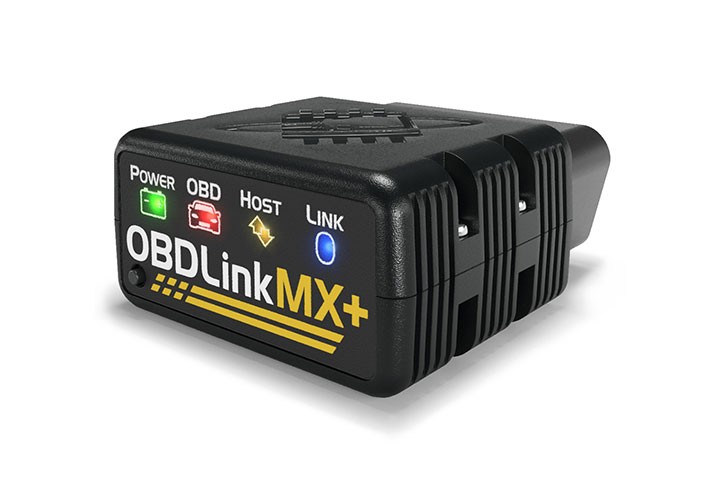
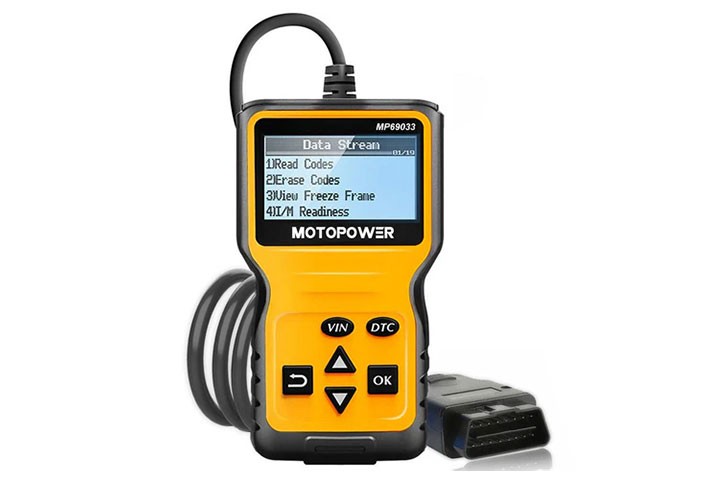
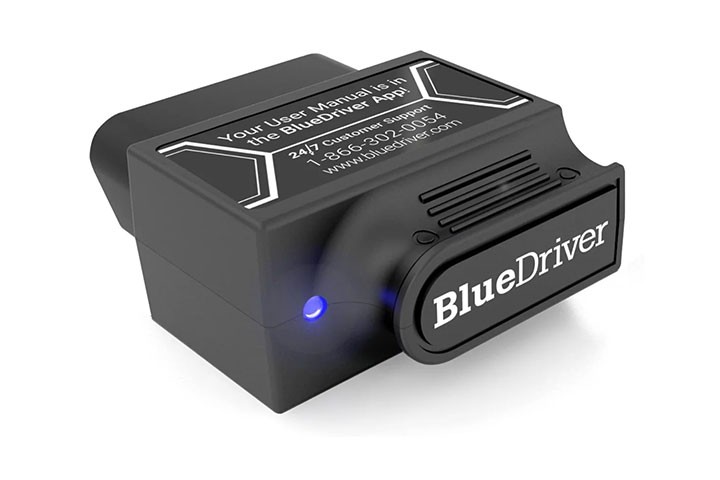
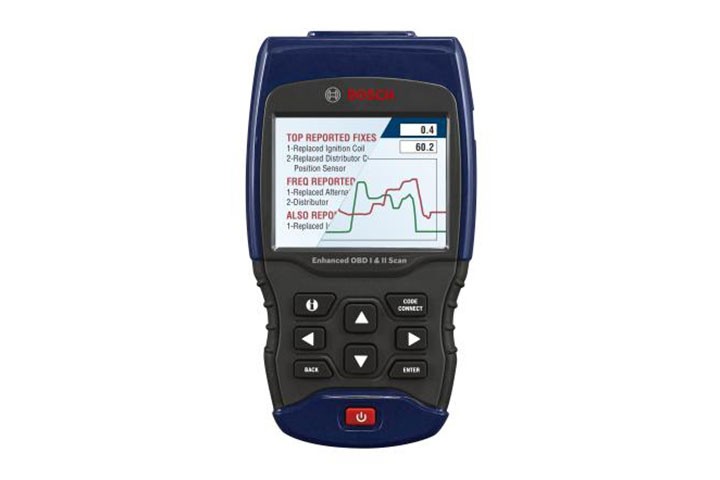
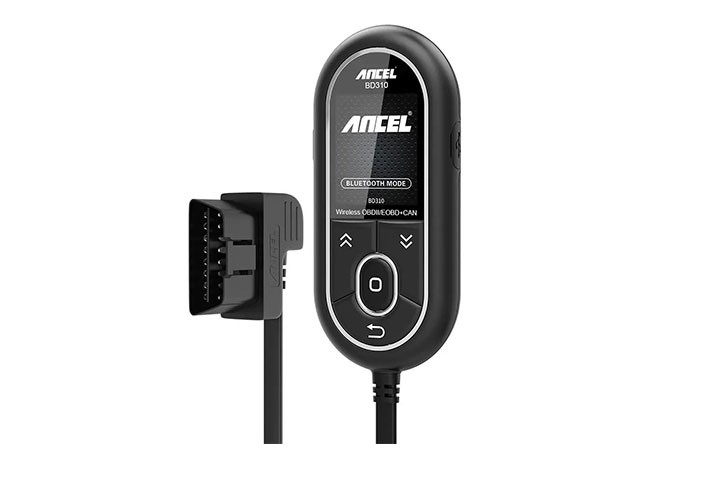
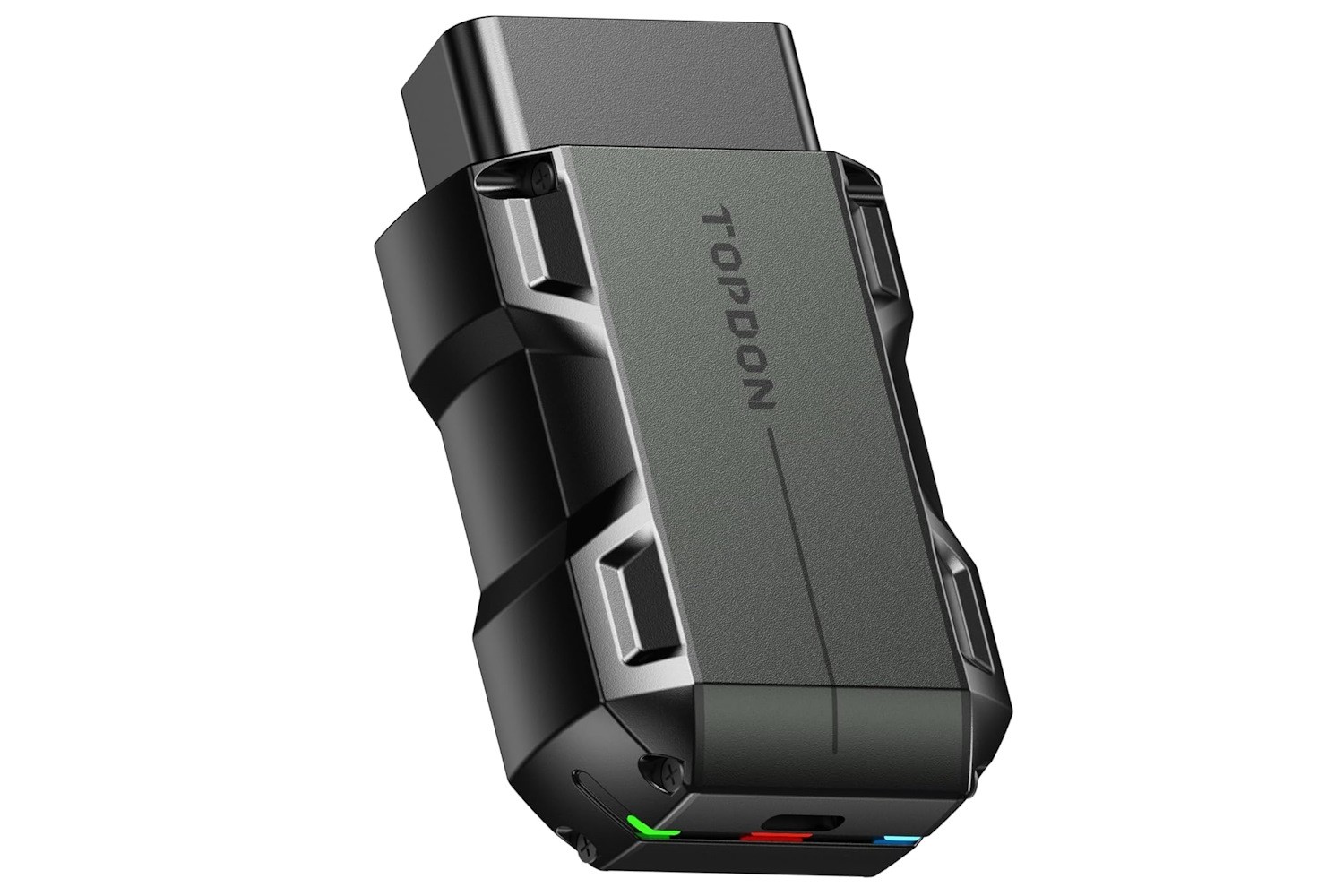
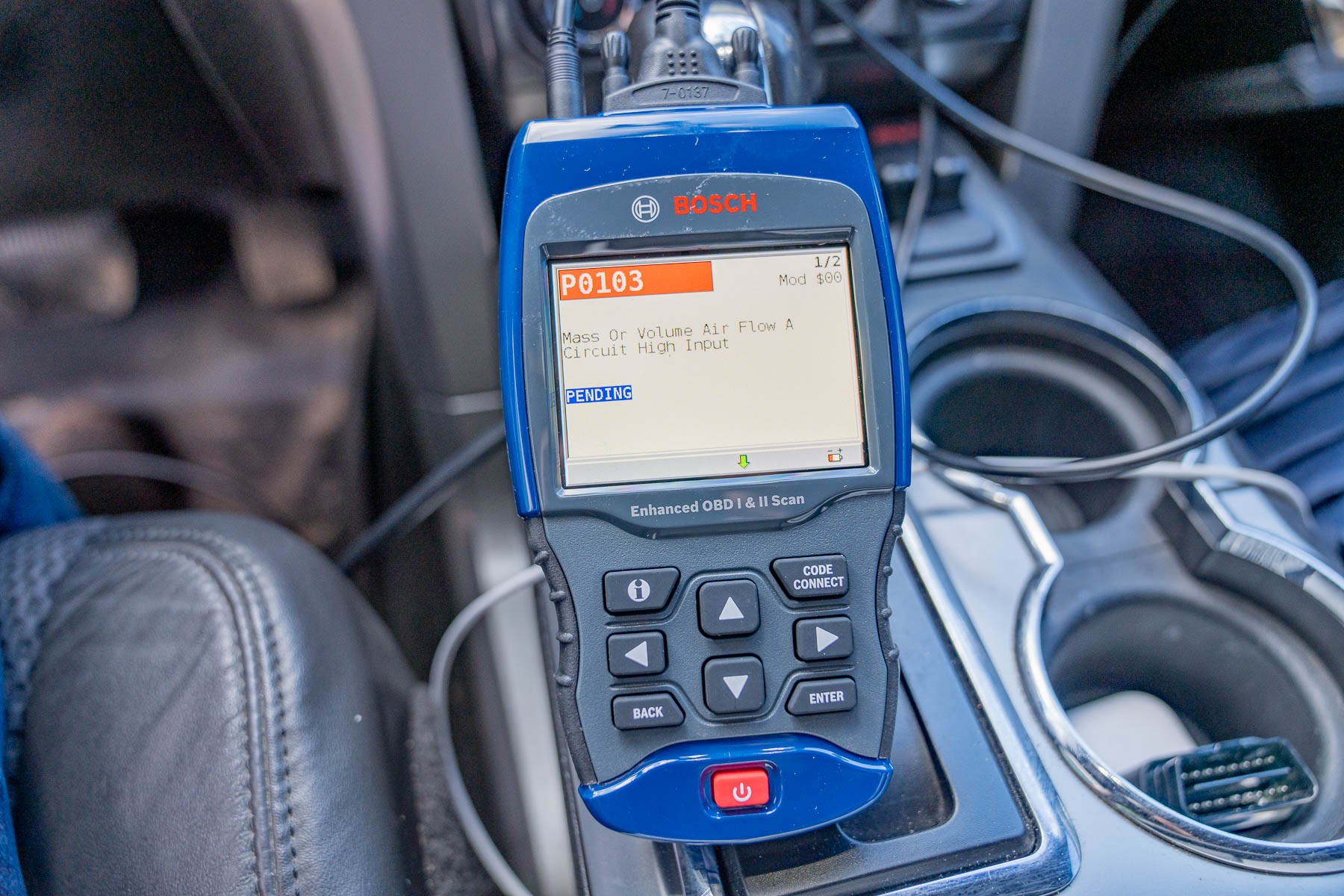

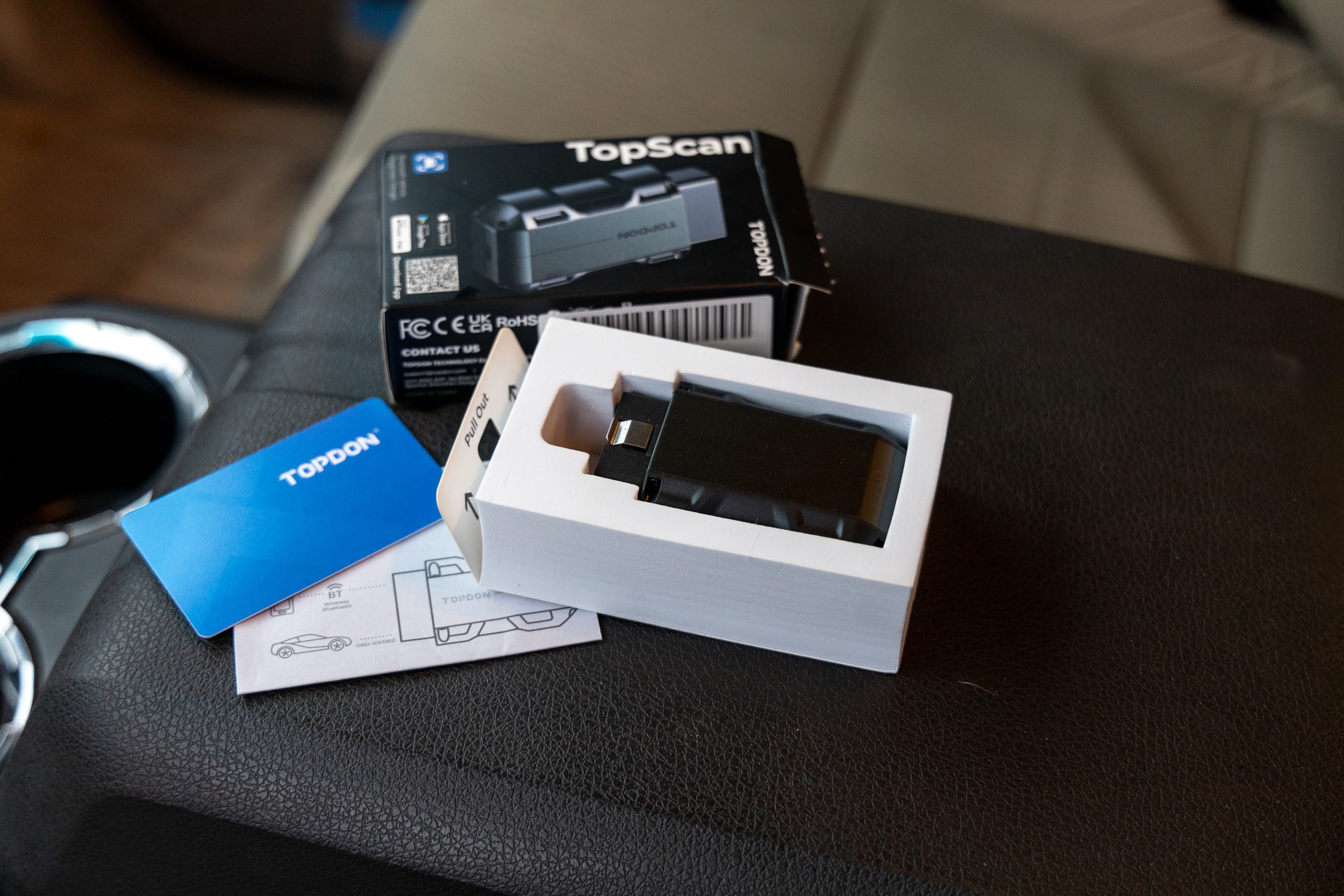


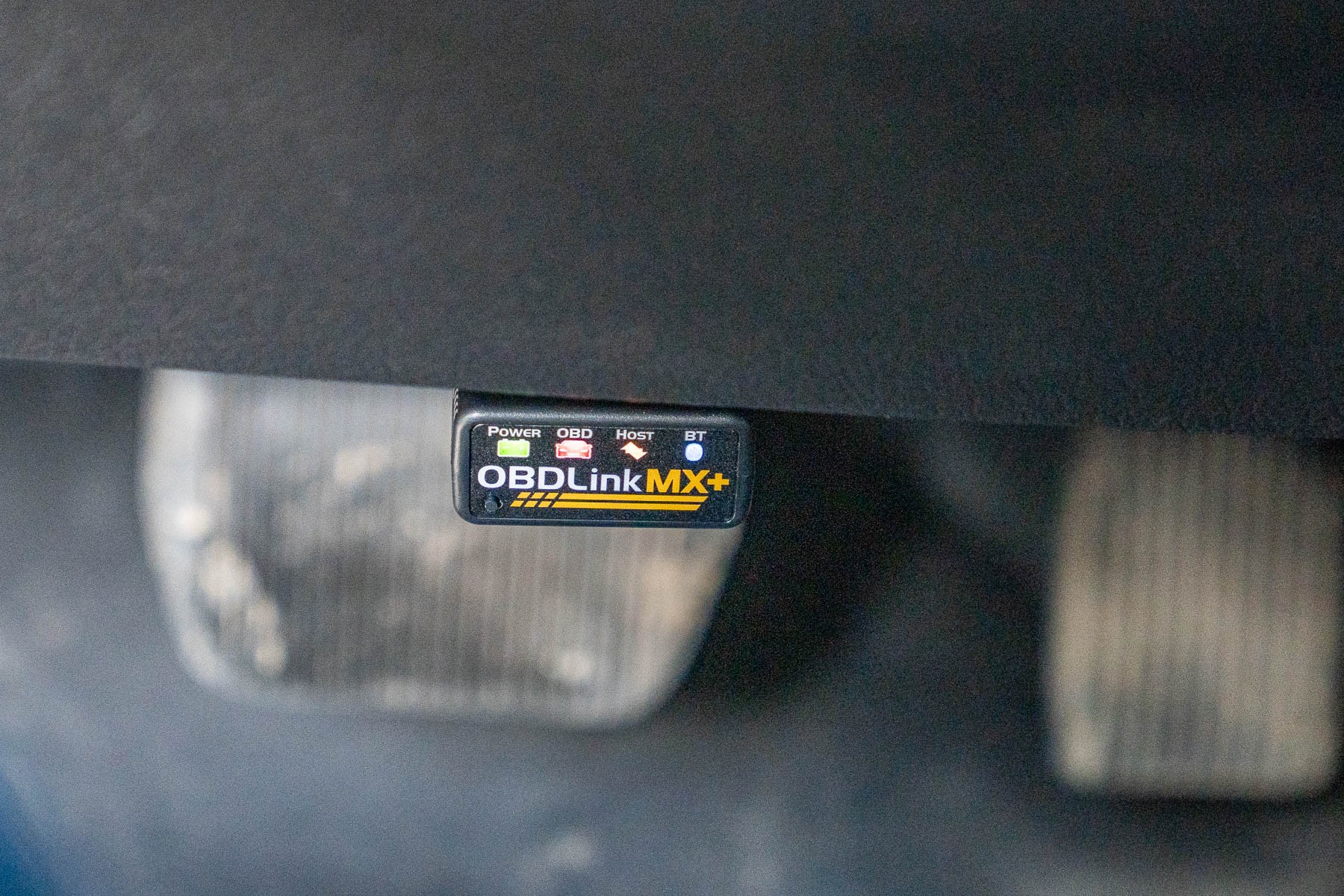
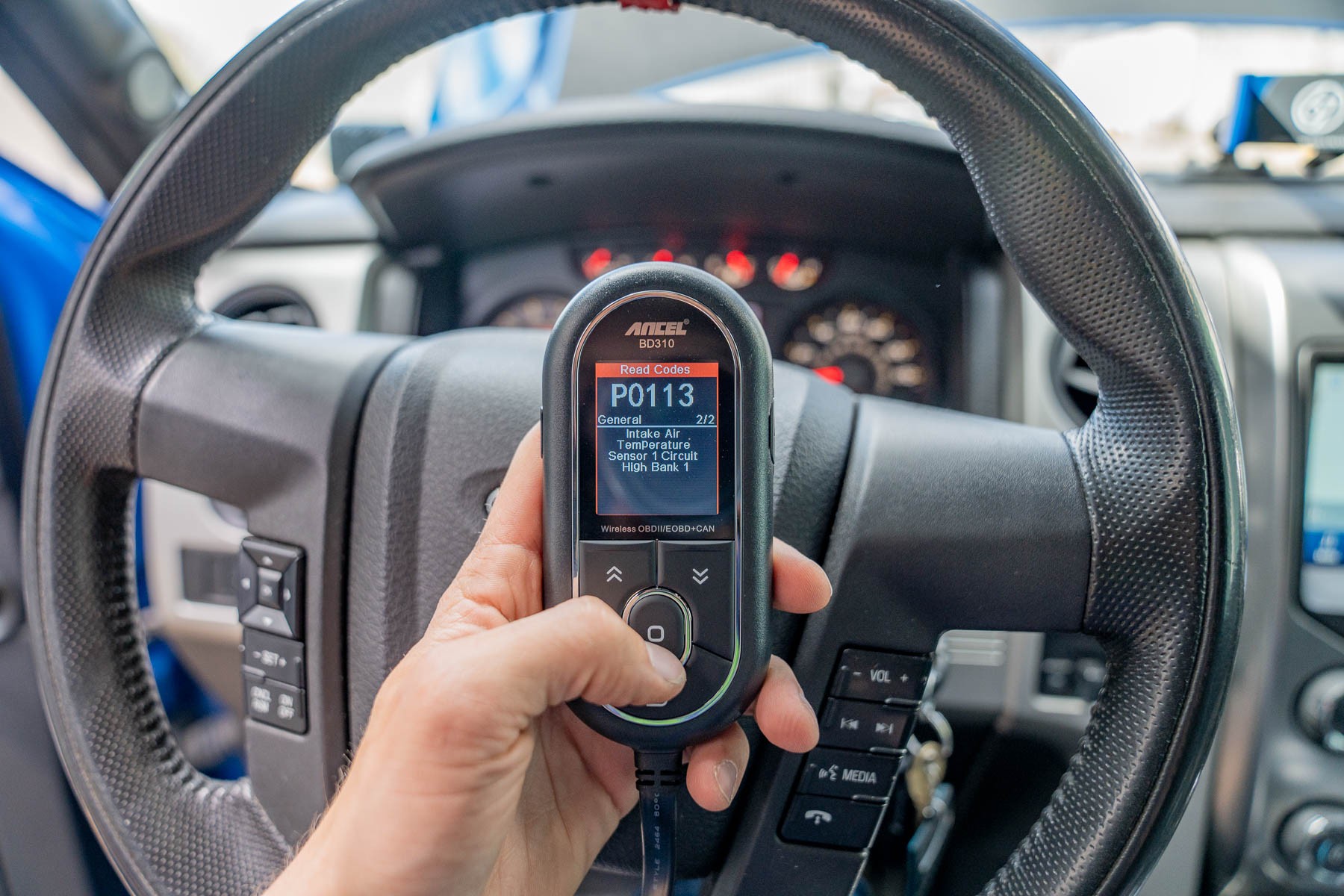
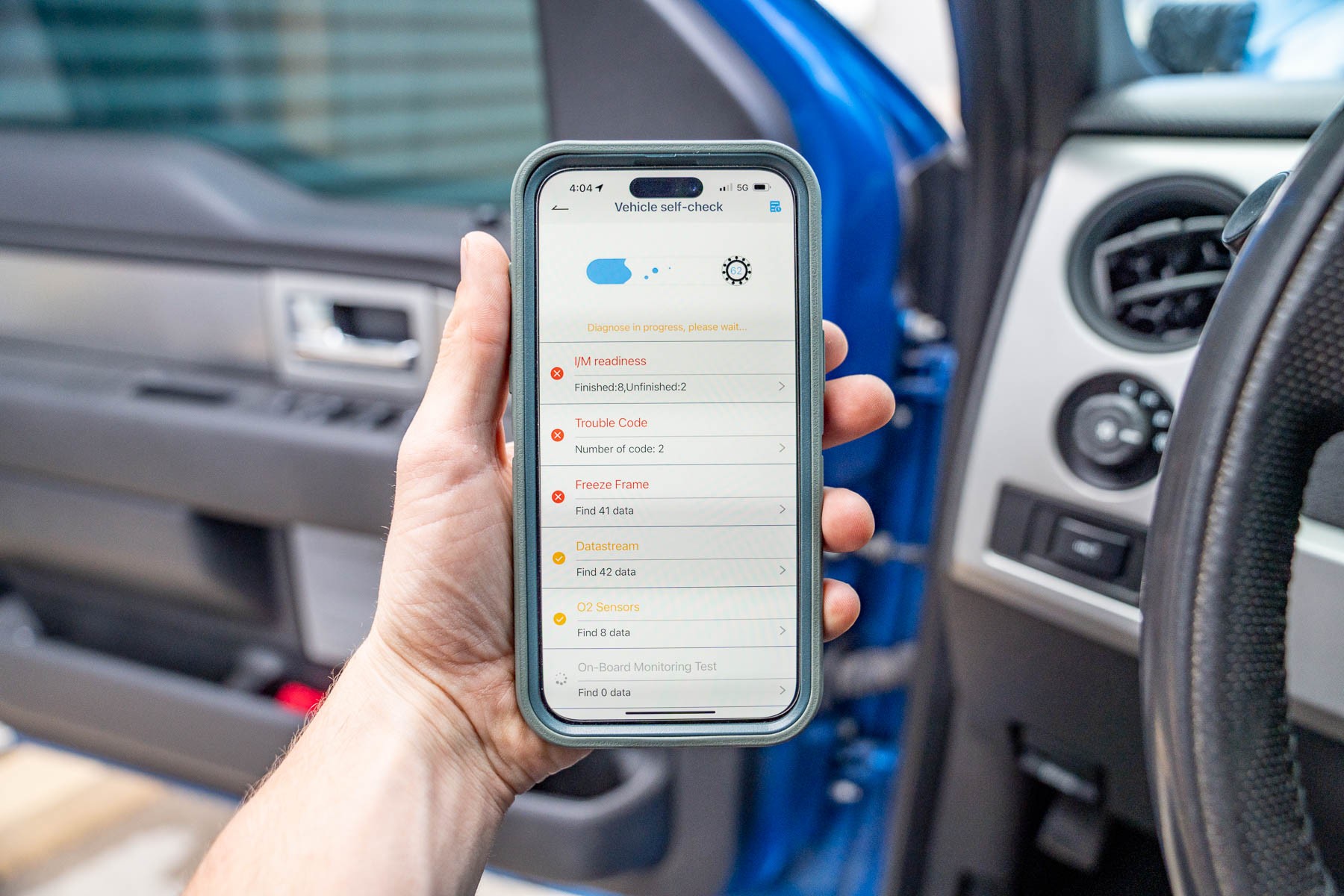


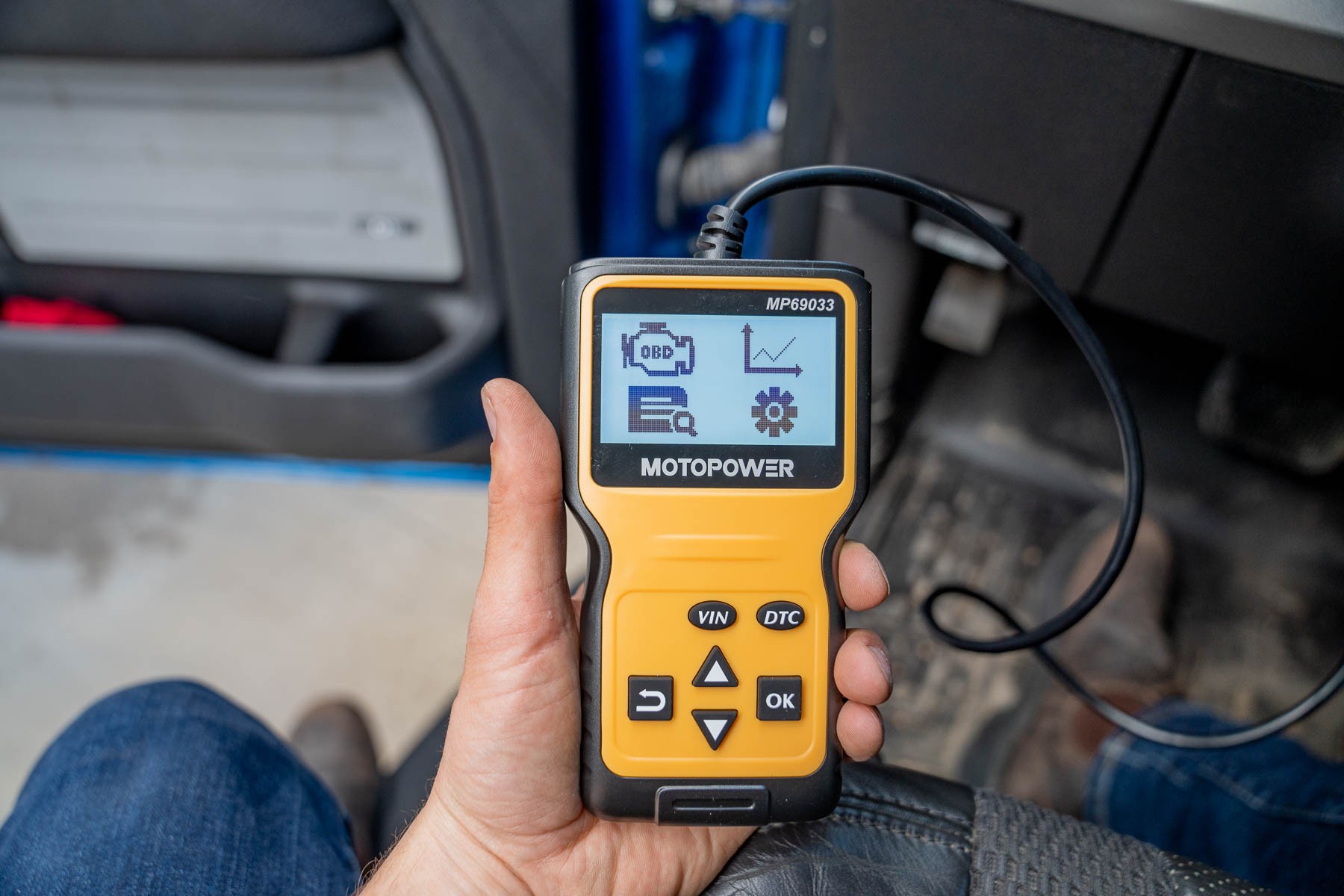

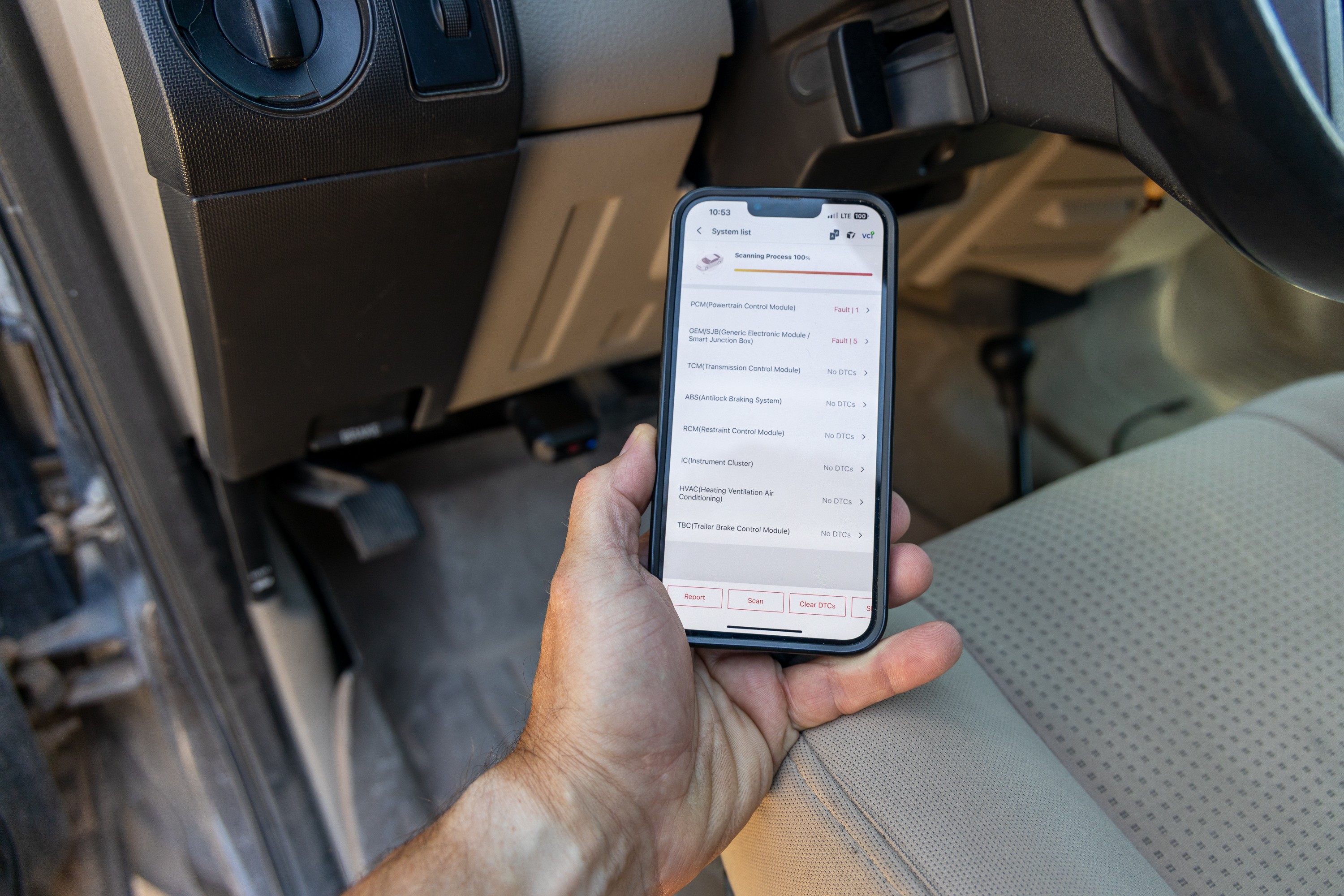
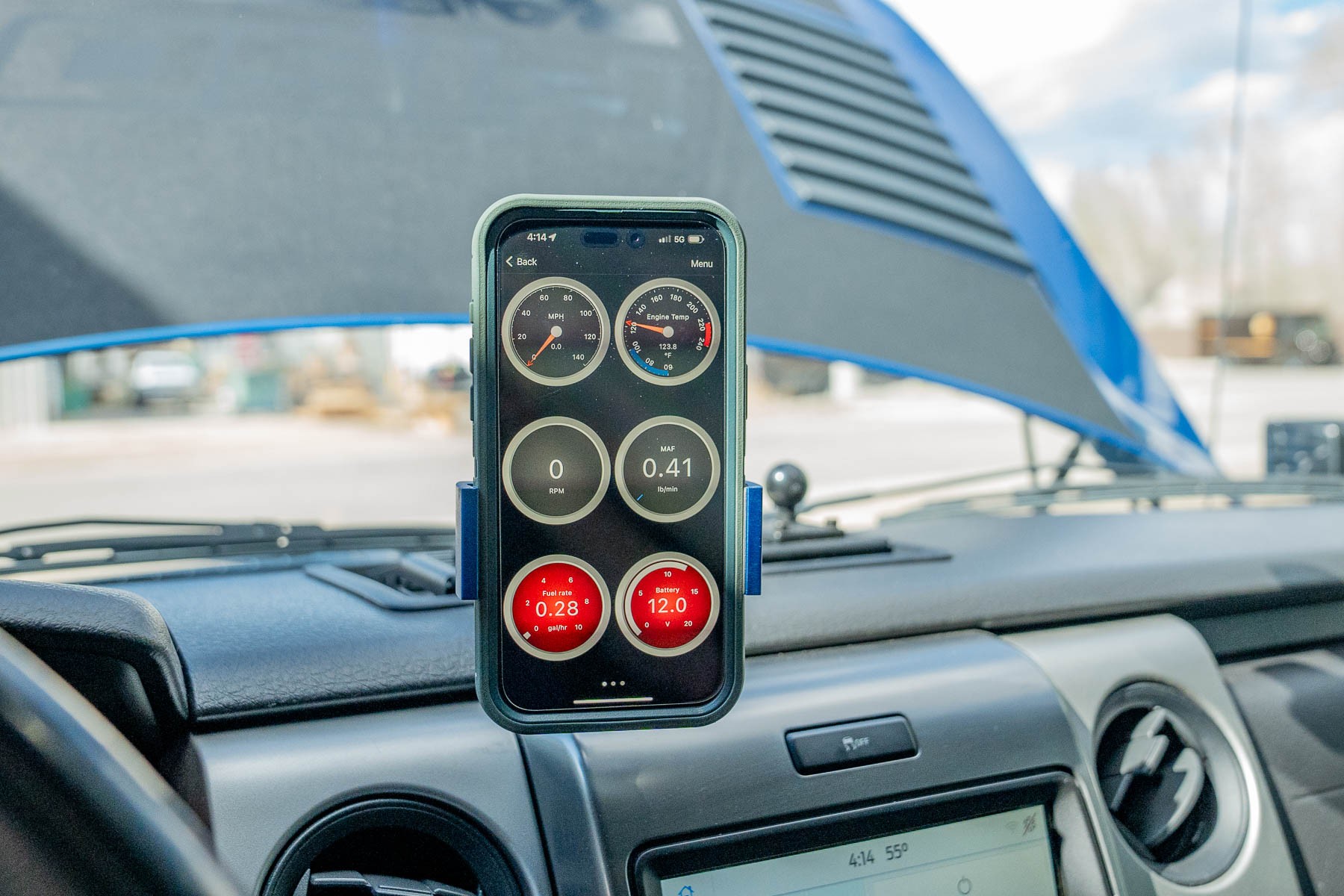
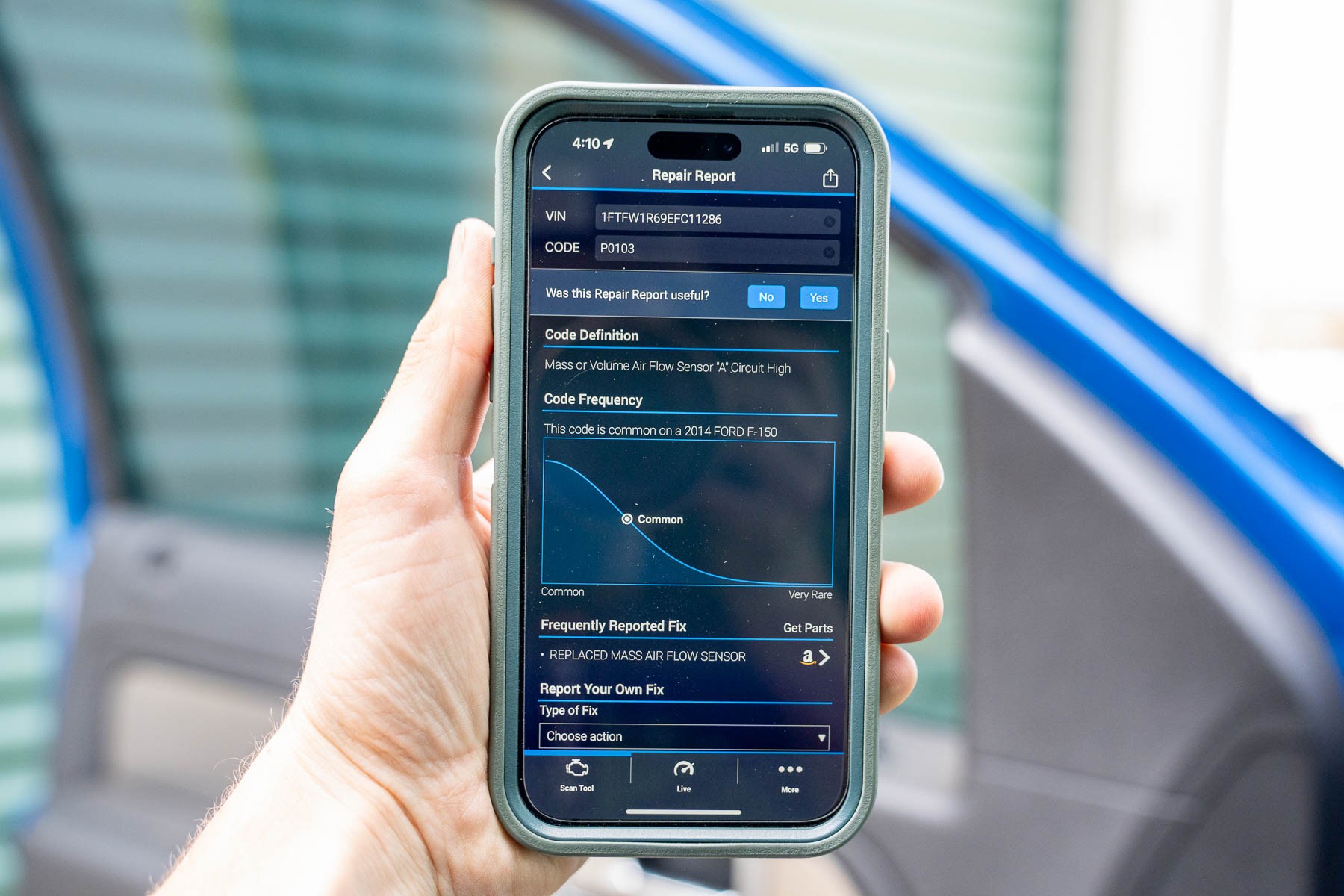
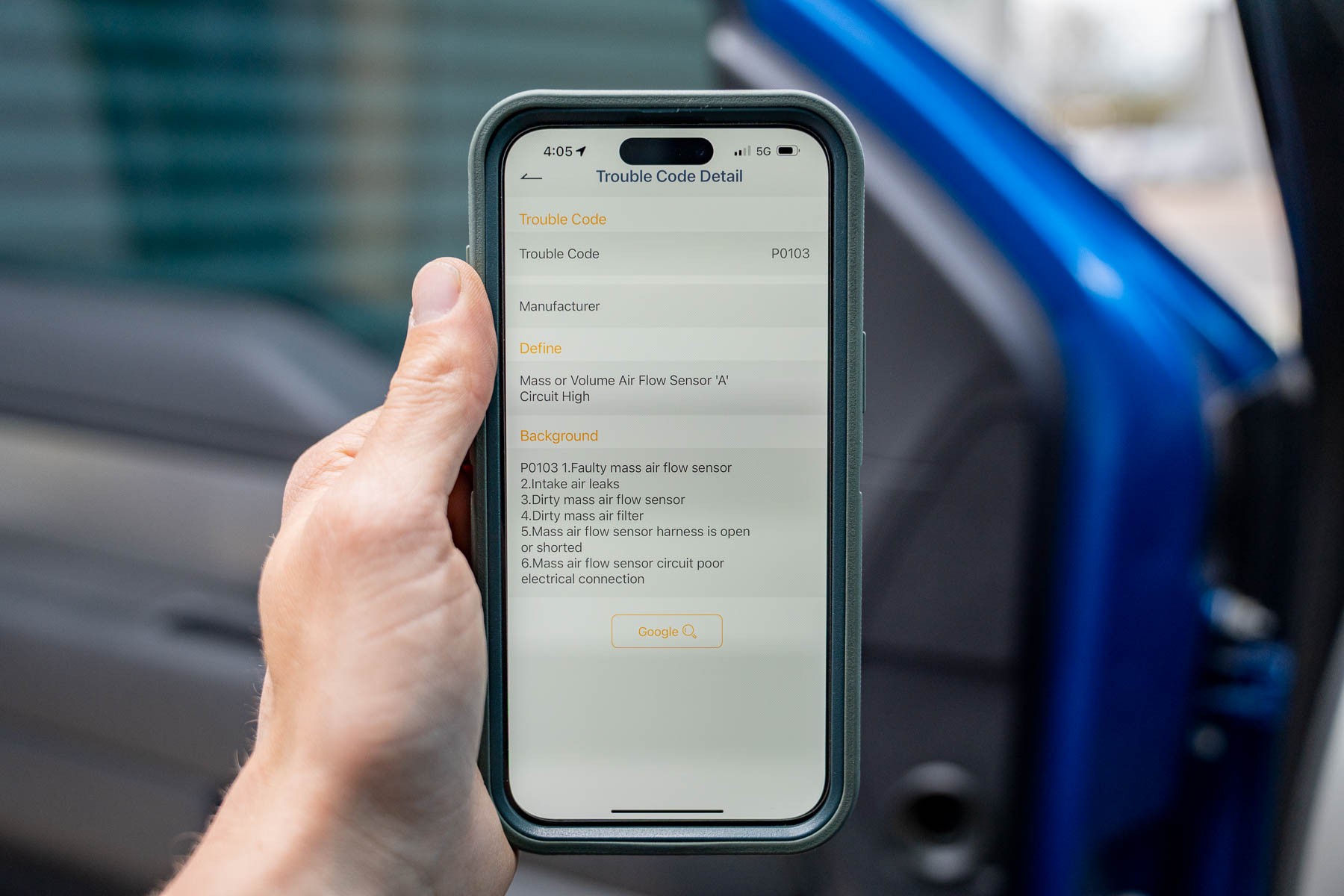
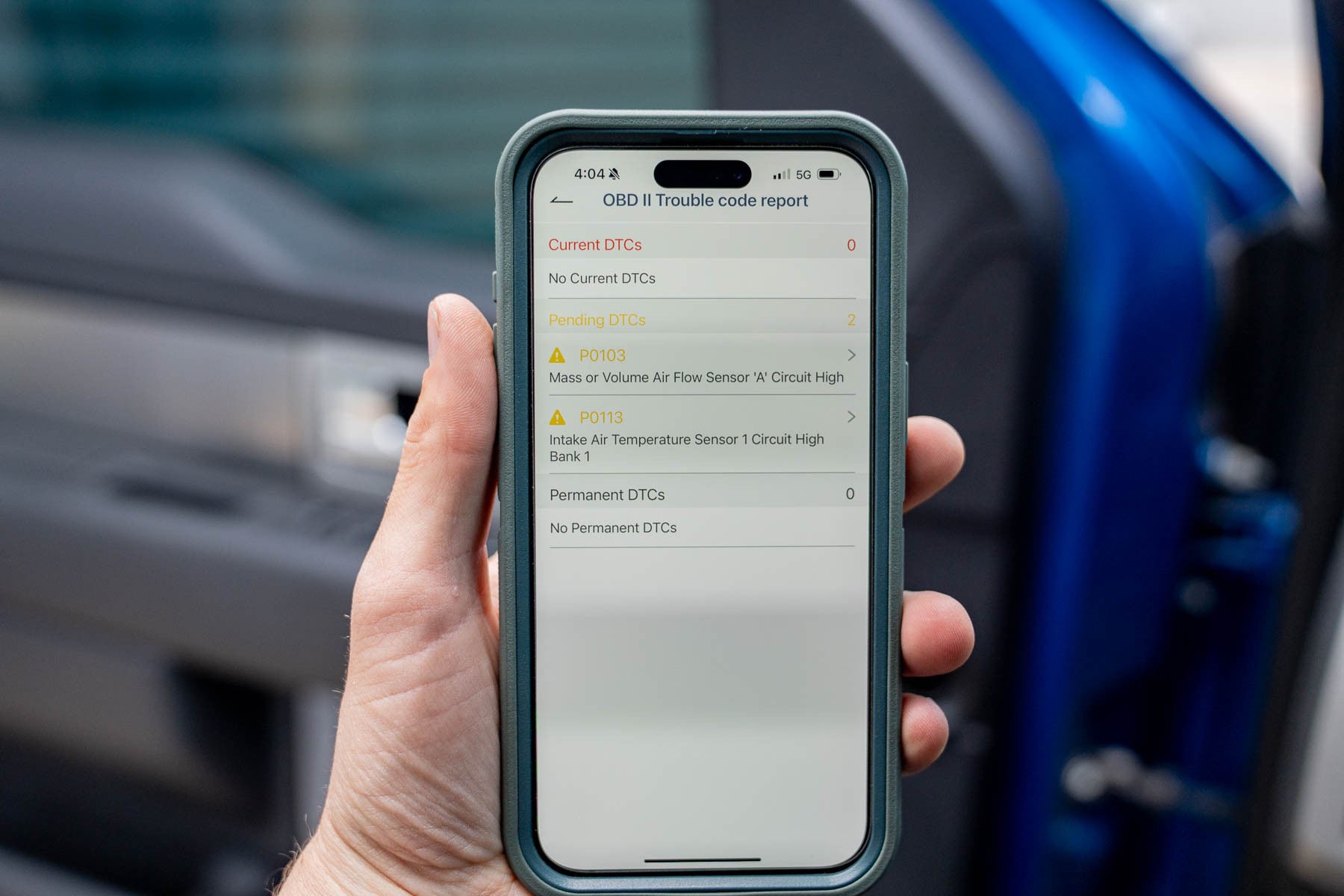
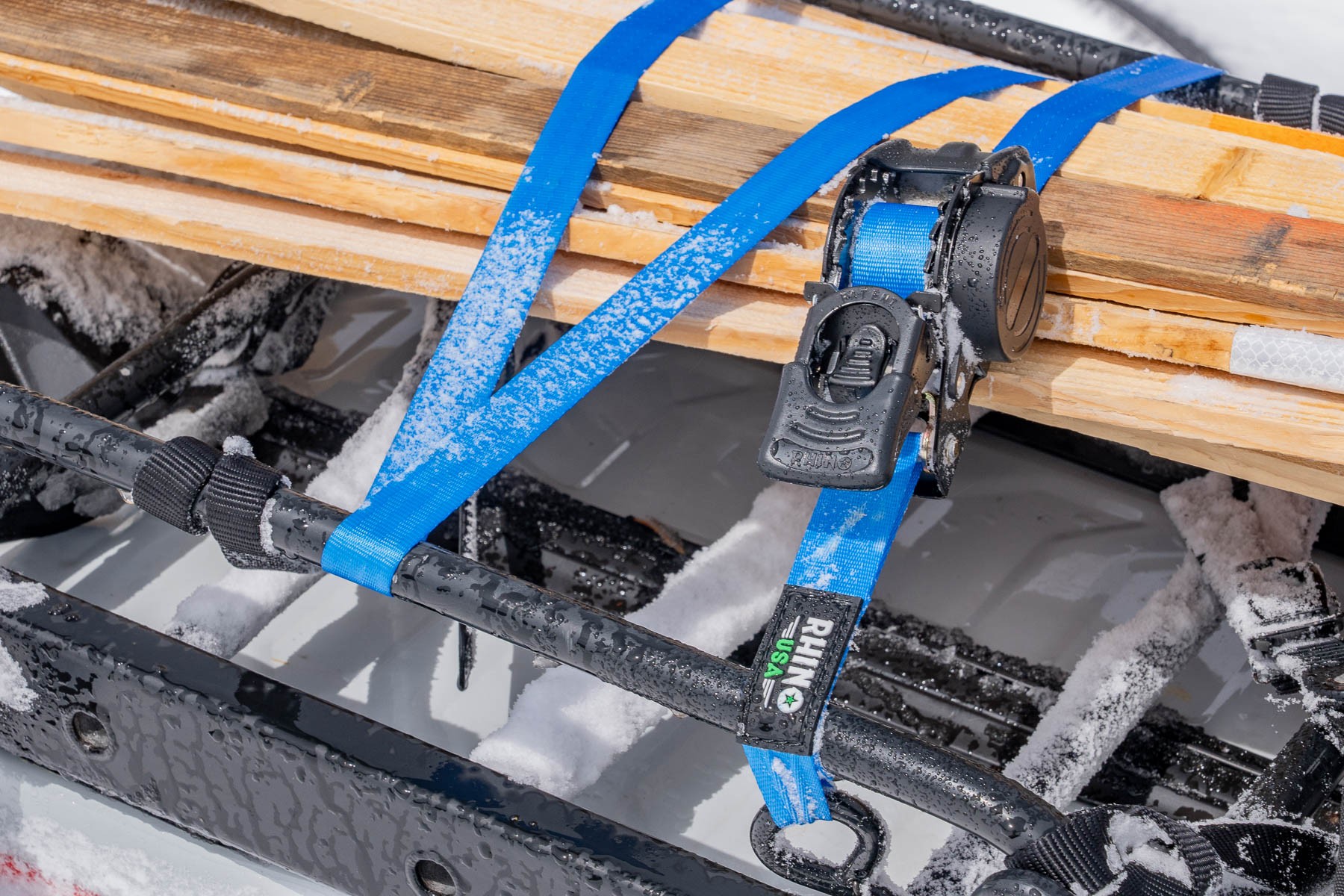
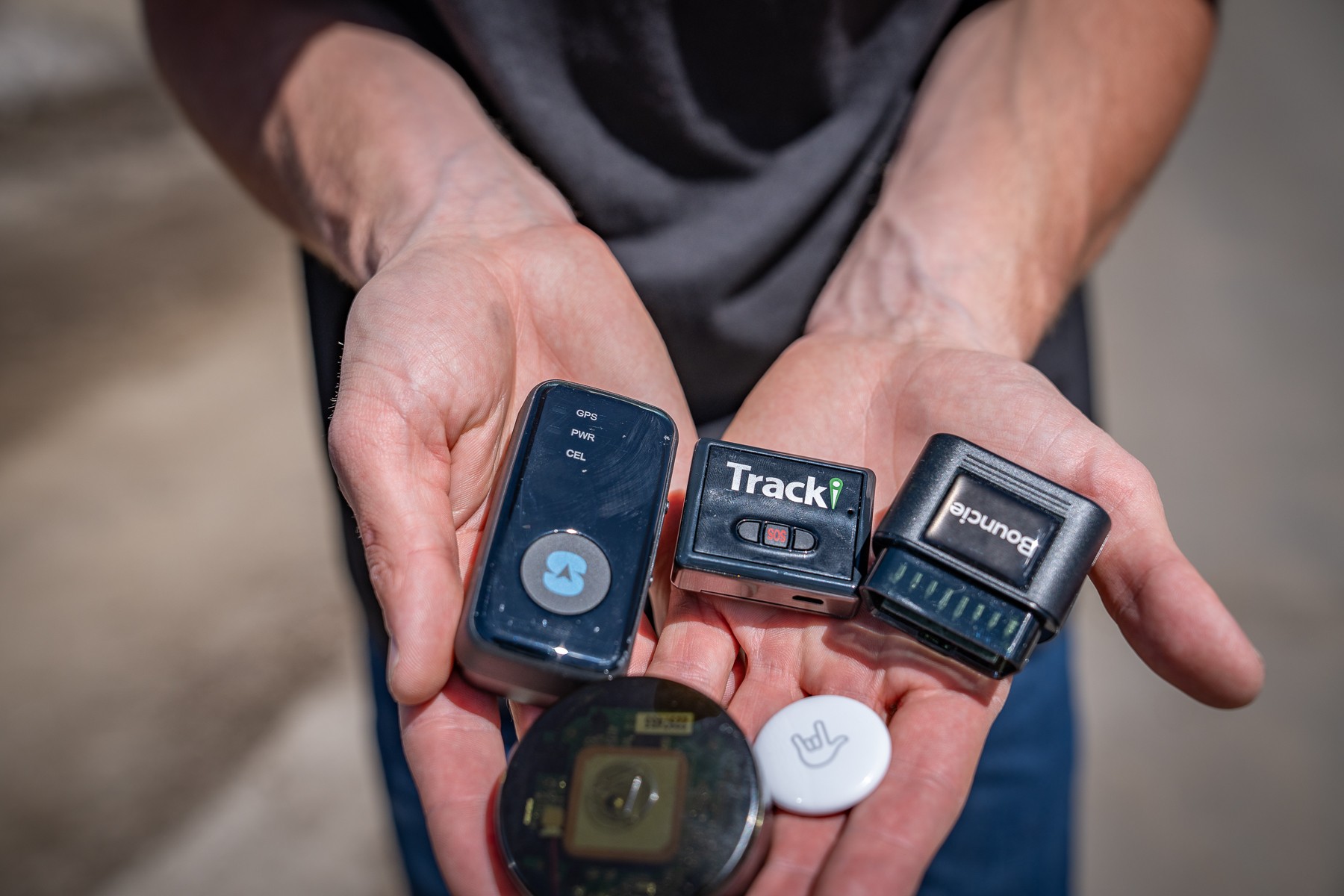
A selection of OBD2 scanners evaluated for performance and features.
How We Tested OBD2 Scanners
Our Expert Testers
Our primary tester, Eric Phillips, brings a decade of outdoor professional experience coupled with a lifelong passion for automotive mechanics. From his formative years building and modifying cars to his ongoing projects of truck customization, Eric has consistently relied on OBD2 scanners and possesses extensive hands-on experience with these tools.
Chip Jordan, our second tester and photographer, is a seasoned outdoorsman and gear enthusiast. With a lifetime spent working on engines and vehicles, Chip appreciates both classic and modern automotive technology, ensuring a balanced perspective in our scanner evaluations.
Our Testing Locations
Eric is based in Southwest Colorado, and Chip in New Mexico. Their extensive road trips throughout the Western U.S. and across the country provided diverse testing environments.
Testing the Topdon TopScan OBD2 Bluetooth Scanner in real-world conditions.
Our Testing Methodology
Our testing process involved two key phases. First, we assessed each scanner’s ability to accurately read, diagnose, and clear diagnostic trouble codes. Second, we evaluated the scanners’ capabilities in providing comprehensive vehicle information and live data monitoring. On our 2014 Ford F-150 Raptor test vehicle, we intentionally disconnected the mass air flow (MAF) sensor to trigger a check engine light and generate P0103 and P0113 error codes. We also conducted tests on a 2008 Ford F-250 with an active TPMS code and historical stored codes.
Across all scanners, we compared the speed and ease of reading and clearing codes, as well as the depth of information provided for each code. We examined the availability of diagnostic aids and suggested fixes associated with each code. At a fundamental level, all tested OBD2 scanners successfully read and cleared the generated codes.
Furthermore, our team investigated the breadth of information accessible through each scanner. We evaluated basic system checks, such as ABS and airbag diagnostics. We assessed the volume of live data parameters that could be monitored simultaneously and the clarity and usability of data displays while driving (Note: In-depth data review should always be performed safely when the vehicle is stationary, similar to avoiding texting while driving. Our assessment of “glanceable” data refers to the ability to quickly check data points akin to monitoring a speedometer or fuel gauge). We thoroughly explored the menus and functionalities of each scanner, prioritizing those that offered the most comprehensive vehicle information.
Our field testing and collective experience informed our rankings of the top OBD2 scanners based on criteria including vehicle compatibility, live data capabilities, diagnostic features, connection type, ease of use, vehicle information access, functions, data logging, test reports, overall features, and customer support.
Beyond our hands-on evaluations, we also considered market popularity, industry recognition, universal compatibility, and affordability to present a well-rounded selection of best OBD2 scanner 2024 options catering to diverse driver needs, vehicle types, applications, preferences, and budgets.
Practice using your OBD2 scanner before encountering vehicle issues on the road.
Buyer’s Guide: Choosing the Right OBD2 Scanner
Reading & Clearing Codes
The primary function of any OBD2 scanner is to read and clear diagnostic trouble codes that trigger the check engine light. These codes are generated by the vehicle’s onboard computer when it detects conditions outside of normal operating parameters within systems like the engine, transmission, emissions, or other components.
Clearing a code removes it from the system’s memory and turns off the check engine light. However, if the underlying issue causing the code is not resolved, the code will likely reappear, and the check engine light will illuminate again. Clearing codes can be useful for verifying if a problem is recurring or after attempting a repair.
The Bluedriver Pro OBD2 Scanner, noted for its ease of use, ideal for beginners.
Understanding Error Code Structure
OBD2 trouble codes are standardized five-character alphanumeric codes. The structure provides key information about the fault:
-
First Character: Indicates the affected system:
- B: Body systems (e.g., interior, accessories)
- C: Chassis systems (e.g., braking, steering, suspension)
- P: Powertrain systems (e.g., engine, transmission)
- U: Network and vehicle communication systems
-
Second Character: Specifies code type:
- 0: Generic (SAE standard, common across all manufacturers)
- 1: Manufacturer-specific (enhanced codes, unique to a specific brand)
-
Third Character: Identifies the subsystem:
- 1: Emission management (fuel or air metering)
- 2: Injector circuit (fuel or air metering)
- 3: Ignition system or misfire
- 4: Emission control system
- 5: Idle control system and vehicle speed control
- 6: Output circuit and computer system
- 7, 8: Transmission system
- 9, 0: SAE Reserved for future standardization
-
Fourth and Fifth Characters: Provide specific fault details within the identified system and subsystem.
The OBDLINK MX+ OBD2 Scanner, a high-performance scanner with comprehensive features.
Code Reading Interface
While all scanners in our guide can access and display these five-character trouble codes, the user experience and depth of code information vary. The Motopower MP69033, being a basic model, prioritizes simplicity in its menu and code reading process.
In contrast, the Bosch 1300 OBD requires a few more steps to initiate code reading but compensates by offering broader system coverage, including airbag and ABS codes.
Bluetooth scanners, utilizing smartphone apps, generally offer faster and more feature-rich code reading experiences compared to button-operated wired scanners. The app-based interfaces guide users through connection and code retrieval with step-by-step instructions, often displaying more detailed code descriptions and related information.
The Ancel BD31 and Bluedriver Pro extend code reading capabilities to airbag and ABS systems. The Bluedriver Pro also includes TPMS diagnostics. Leading in system coverage, the OBDLINK MX+ and Topdon TopScan OBD2 Bluetooth Scanner offer the most comprehensive coverage, reading ABS, airbag, TPMS codes, and accessing advanced manufacturer-specific parameters for GM and Ford vehicles.
The Ancel BD31 OBD2 Scanner, offering Bluetooth, wired, and HUD modes in one device.
Diagnostics
Beyond simply reading codes, effective diagnostics involves understanding the root cause of a problem. When an OBD2 scanner retrieves a code, it typically provides a basic description associated with that code. The Motopower MP69033, for example, primarily displays the code and its fundamental description.
For instance, the P0113 code is described as “Intake Air Temperature Sensor 1 Circuit High.” Diagnostics then involve investigating the potential reasons for this code. Many scanners in our guide go beyond basic code reading and offer diagnostic assistance.
The Bosch 1300 OBD provides the same basic code information as the Motopower MP69033 but includes an integrated library of 26 million potential fixes for various error codes. Users can input specific error codes to access possible solutions directly on the device, offering valuable offline diagnostic guidance.
Bluetooth OBD2 scanners leverage internet connectivity to access vast online resources for code interpretation. Upon displaying an error code, these scanners often provide links to online databases and search engines to research the specific code and find potential fixes. However, this functionality requires cellular or Wi-Fi connectivity, unlike the offline fix database in the Bosch 1300 OBD. The Ancel BD31 stood out in diagnostic assistance, providing up to six potential causes per error code and a direct link to Google search for further investigation of each fault code.
Bluetooth OBD2 scanners utilize smartphone apps for data display and advanced features.
Live Data & Real-Time Monitoring
OBD2 scanners excel not only at reading codes but also at providing real-time data from your vehicle’s sensors. Each trouble code is linked to a specific sensor. When a sensor detects data outside of its normal range, it triggers a code. Scanners allow you to view live data streams from these sensors.
Some scanners display data from only one sensor at a time, while others can monitor and display multiple sensor readings simultaneously. Data can be presented numerically, graphically, or in simulated gauge displays, mimicking the look of your vehicle’s dashboard.
The OBDLINK MX+ is a leader in live data and real-time monitoring. It offers a customizable heads-up display with gauge-style readouts for 13 user-selectable parameters. Users can also monitor any vehicle sensor on a separate data screen. Furthermore, the MX+ logs and archives data from hundreds of vehicle sensors and records trip data, including GPS location, distance, fuel economy, and more. This data logging capability is invaluable for analyzing sensor behavior over time and diagnosing intermittent issues.
The Topdon TopScan OBDII Bluetooth Scanner offers particularly granular live data capabilities, including the ability to adjust air-fuel mixture and perform cylinder compression testing – features typically found in more expensive professional tools, appealing to performance enthusiasts and advanced DIYers.
The Bosch 1300 OBD scanner includes a comprehensive set of six connectors for broad vehicle compatibility.
Ease of Use
While OBD2 scanners might initially seem like complex professional tools, modern designs prioritize user-friendliness, making them accessible to all levels of automotive enthusiasts. Most scanners include step-by-step instructions and prompts to guide users through vehicle connection and scanning processes.
Bluetooth scanners generally offer superior ease of use. Code reading is managed through intuitive mobile apps for smartphones or tablets. After plugging the scanner into the OBD2 port and establishing a Bluetooth connection, the app interface provides a visually rich and user-friendly control system compared to traditional wired scanners.
The Bluedriver Pro app and scanner combination stood out for its exceptional ease of use. Code reading and clearing are simplified through clear menus and straightforward instructions. The app interface is intuitive across all functions, and a readily accessible user manual is included within the app.
OBD2 scanners utilize various display interfaces, from integrated screens to smartphone apps.
Connection Types
OBD2 scanners connect to the vehicle’s OBD2 port via either a wired connection or a Bluetooth wireless link.
Wired Scanners
Wired OBD2 scanners are the traditional design. The scanner unit houses the processing power, display screen, and control buttons. They connect to the OBD2 port via a cable.
Wired scanners are self-contained and do not require batteries (except for models like the Bosch 1300 OBD with battery backup) or external devices. Some, like the Bosch 1300 OBD, can store offline databases, such as code fix libraries. Operation requires being physically near the OBD2 port, typically within the vehicle’s front seat due to cable length. Wired scanners are generally bulkier than Bluetooth models.
Bluetooth Scanners
Bluetooth scanners are significantly more compact. They plug into the OBD2 port but operate wirelessly, connecting to a smartphone or tablet via Bluetooth. The processing and display functions are handled by a dedicated app installed on the mobile device.
Bluetooth scanners leverage the larger, higher-resolution screens of smartphones and tablets and offer more user-friendly app interfaces. They are highly portable and can often be left plugged into the OBD2 port when not in active use.
A potential drawback is the reliance on a charged smartphone or tablet with the app installed. Some features requiring internet connectivity may be limited in areas with poor cell service or no Wi-Fi.
A range of OBD2 scanners are available to suit different needs and budgets.
Price & Value Considerations
Even budget-friendly OBD2 scanners can provide valuable diagnostic information. More advanced scanners offer professional-grade features. Our price breakdown helps you choose the best OBD2 scanner 2024 for your budget and needs.
Budget-Friendly Options
In the sub-$100 range, the Motopower MP69033 ($24), Ancel BD31 ($88), and TOPDON TopScan OBD2 ($89) offer excellent value.
The Bluetooth-enabled Ancel BD31 and Topdon TopScan deliver features exceeding basic code reading, suitable for most DIY users. They offer exceptional value for their capabilities.
For users prioritizing basic code reading and affordability, the Motopower MP69033 is the top budget pick. It’s simple, reliable, and performs its core function effectively at a very low price point.
The Topdon TopScan OBD2 Bluetooth Scanner offers a strong feature set at a mid-range price.
Mid-Range Scanners
Stepping up in price, the Bluedriver Pro ($100) and OBDLINK MX+ ($140) Bluetooth scanners provide a significant jump in features and performance. These mid-priced options are well-suited for serious DIYers and automotive enthusiasts.
Our top recommendation in this category, and our overall top pick, is the OBDLINK MX+. It offers the most comprehensive metrics and data logging among tested scanners and supports third-party app integration for advanced vehicle customization and performance tuning – professional-grade features at a mid-range price.
Premium Scanners
The Bosch 1300 OBD ($300) occupies the premium tier. This wired scanner is designed for users serious about working on both modern OBD2 and older OBD1 vehicles. While pricier, it rivals professional-grade scanners and is the only scanner in our guide with OBD1 compatibility. Its offline database of 26 million fixes and battery backup make it a robust and versatile premium choice.
The Topdon TopScan OBD2 Bluetooth Scanner app features a clear and user-friendly interface.
Frequently Asked Questions
What does an OBD2 scanner do?
OBD2 scanners communicate with your vehicle’s onboard computer system (OBD stands for On-Board Diagnostics). They retrieve vehicle diagnostic information, read and clear check engine lights and trouble codes, and, in more advanced models, provide diagnostic assistance, live sensor data, and performance monitoring features.
The OBDLINK MX+ OBD2 scanner displays data on a customizable 6-gauge digital dashboard via its app.
Do OBD2 scanners work on all vehicles?
OBD2 became a mandatory standard for all vehicles manufactured for sale in the United States in 1996 and in the European Union in 2001. OBD2 scanners should be compatible with all vehicles manufactured in these regions from those years onward.
Scanner manufacturers continuously update compatibility to include newer vehicle models. However, it may take a few years for full compatibility with the very latest models to be implemented. Vehicles manufactured for markets like Canada and Japan may have variations of OBD2. Always verify scanner compatibility with your specific vehicle before purchase.
Can you control your car through OBD2?
While OBD2 scanners can’t steer or drive your car, they can control and interact with various vehicle systems. You can clear check engine lights, access and manage airbag and ABS systems, reset maintenance lights, and, in some advanced scanners, even adjust certain engine parameters.
Bluetooth OBD2 scanners offer a user-friendly and feature-rich experience via smartphone apps.
What problems can OBD2 scanners detect?
OBD2 scanners are designed to detect a standardized set of diagnostic trouble codes related to the check engine light system. These codes cover a wide range of potential issues within the engine, transmission, emissions system, electronics, airbags, brakes, and other vehicle systems. The five-character codes provide both generic and manufacturer-specific information about detected faults.
The Ancel BD31 app offers multiple potential fixes for each detected error code.
What’s the difference between OBD1 and OBD2?
OBD1 was an earlier, less standardized diagnostic system used by some manufacturers before OBD2 became the industry standard. OBD1 systems, used in some 1984-1995 Ford and GM vehicles and 1989-1995 Chrysler and Toyota models, were less comprehensive and lacked the standardized error codes of OBD2. With OBD1, the same error code could indicate different problems across different manufacturers.
OBD2 standardized error codes and diagnostic protocols across all manufacturers, improving consistency and accessibility of vehicle diagnostics. The Bosch 1300 OBD is unique in our guide as the only scanner compatible with both OBD1 and OBD2 systems, making it ideal for owners of older and newer vehicles.
DTC (Diagnostic Trouble Code) is the standardized code displayed by OBD2 scanners.
Motors
The Best Ratchet Straps of 2024
Need ratchet straps to secure your gear? We tested the top ratchet straps to help you find the perfect system for your hauling needs.
Motors
The Best GPS Trackers for Cars of 2024
We evaluated a variety of GPS trackers to identify the best options for tracking vehicles, assets, and loved ones. Here are our top recommendations.